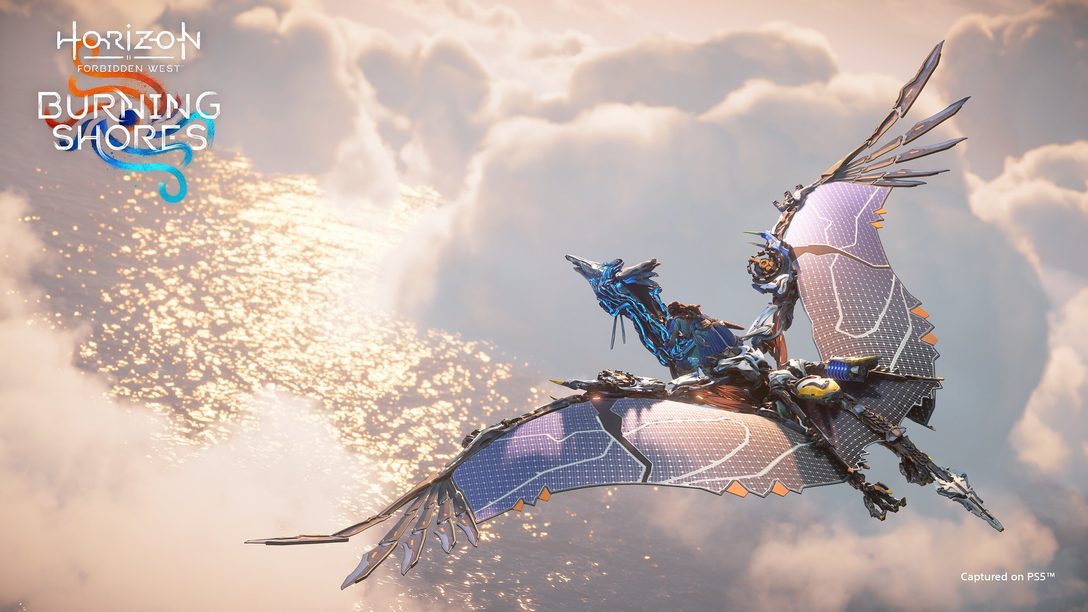
Guerrilla’s teams detail how it elevated the series’ skyscape for the upcoming expansion.
The world of Horizon is vast and majestic, featuring lush landscapes crowned by seemingly endless skies. When the team at Guerrilla began creating this world, developers of various disciplines considered how to bring an immersive level of life to the world. For Guerrilla’s Atmospherics team, this meant populating the skies with lifelike clouds.
This work was evolved for Horizon Forbidden West. And now, in Burning Shores, Aloy will soar through more breathtaking, realistic skies than ever before.
The approach
“When we think of a horizon, we imagine vast expanses like the open ocean and how the clouds and the sun arc down to touch them at some immeasurable distance,” says Andrew Schneider, Principal FX Artist at Guerrilla. “Open-world games present developers with metaphorically similar challenges. How do we push the experience so that the player feels that they are in an environment that could be endless?”
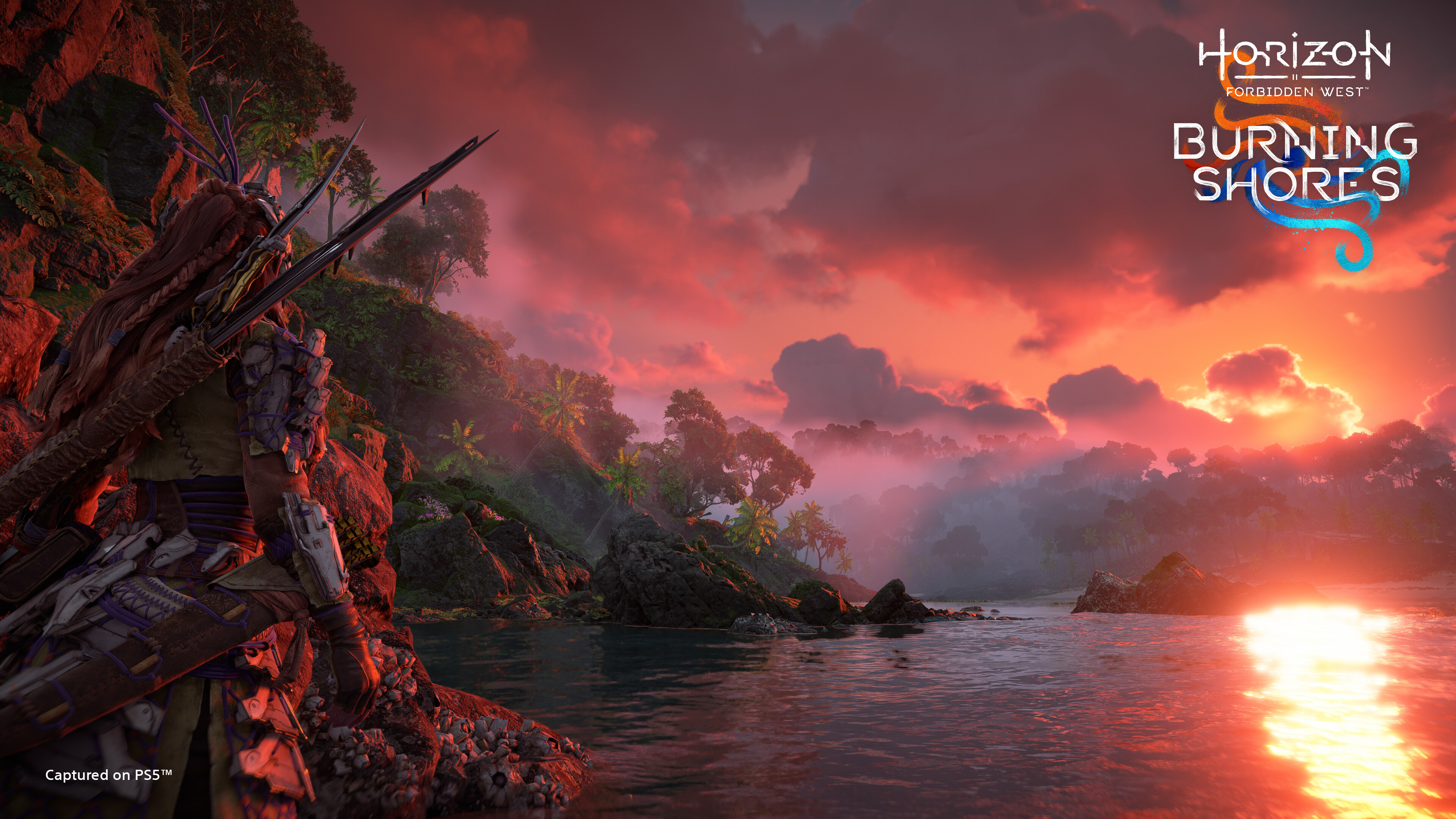
It was one thing to ask the question but another to break it down into technical tasks.
In the early 2010s, feature film and animation VFX started using volumetric rendering to create clouds. For video games, this technique took too long to render with high-quality results at interactive framerates, but developers knew it held game-changing potential.
With innovations in hardware, this began to change. At the nexus of the PlayStation 4 in 2015, Andrew partnered with Nathan Vos, Principal Tech Programmer at Guerrilla. Together, they developed the highly efficient open-world volumetric cloud system that can be seen in Horizon Zero Dawn. The intricately detailed clouds framed Aloy’s world as a hopeful, beautiful one. It supported changes to the time of day and realistic animations, creating the sense of a fully living, breathing world.
This established the foundation the team would build upon for Horizon Forbidden West.
The evolution
In video games, clouds can help convey a mood. Along with the abundance of green, clear waters and cragged cliffs, the clouds of Horizon punctuate the world with emotion. To achieve this, they had to be more than white wisps far above the Aloy’s head; they needed movement, variety, and definition.
“We looked to artists who were part of the luminism movement for inspiration, like 19th-century painter Albert Bierstadt. These painters had mastered the interplay between clouds and the land beneath, using light and detail to create space, producing truly dramatic landscape paintings.
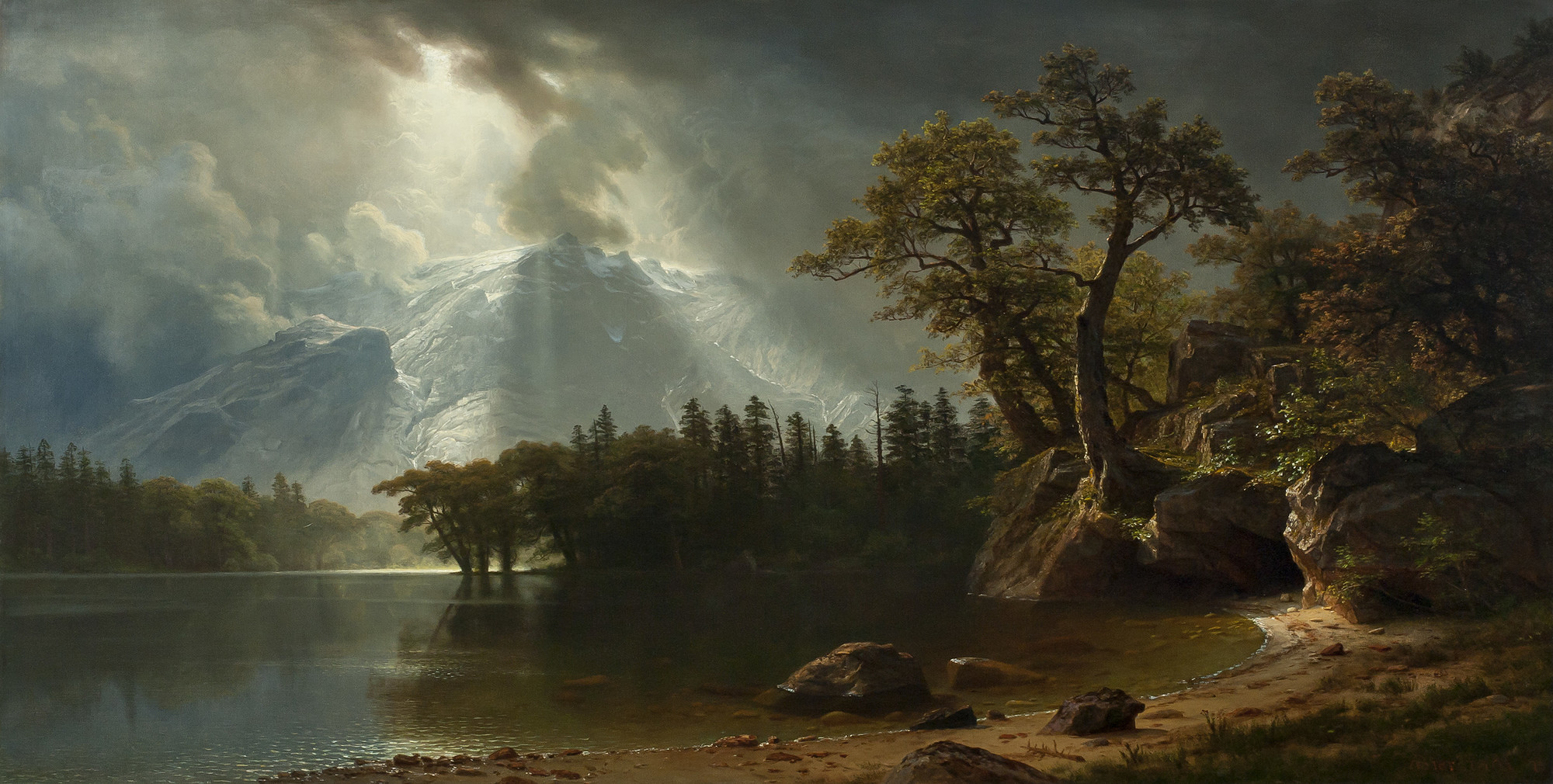
Passing Storm over the Sierra Nevadas by Albert Bierstadt, 1870
“To recreate this effect in 3D, we had to develop a way to model clouds. For Horizon Zero Dawn, we’d explored various methods for creating cloudscapes. Voxels are blocks that can build volumetric 3D clouds. We’d actually made a cloud simulator and experimented with rendering three-dimensional ‘voxel’ data in real time.”
“But technologically, it was too early for this,” Andrew recalls. “The hardware and software just weren’t at the right stage of development. So, we settled with modeling clouds in an efficient-to-render way that still yielded high-quality results, but with more modeling effort than simulation.”
The solution was to paint fixed layers of clouds rather than individual formations. But this process would need to be expanded to support the addition of flying mounts in Horizon Forbidden West.
For the sequel, Andrew and Nathan upgraded the rendering quality of the base system used in Zero Dawn, expanding it to support a new fog-like cloud that the player could fly through at low altitudes. This allowed for awe-inspiring atmospherics, like a superstorm with sinister vortex motion and internal lightning effects. Now, the clouds were a character of their own, rumbling with atmospheric tension.

The next technical challenge
Naturally, the next step was to continue innovating this system for Horizon Forbidden West: Burning Shores. For the expansion, the team has elevated the experience using voxel technology, among many other technical improvements throughout the world.
“The cloud systems that we developed for Horizon Zero Dawn and Horizon Forbidden West were fast because they didn’t store clouds as 3D objects, but rather instructions on creating 3D clouds from limited 2D information. The PlayStation 5 can handle larger datasets. So, after Forbidden West wrapped, we set to work writing a voxel cloud renderer prototype that could live up to our standards for quality, and actually allow the player to fly through highly detailed cloud formations.”
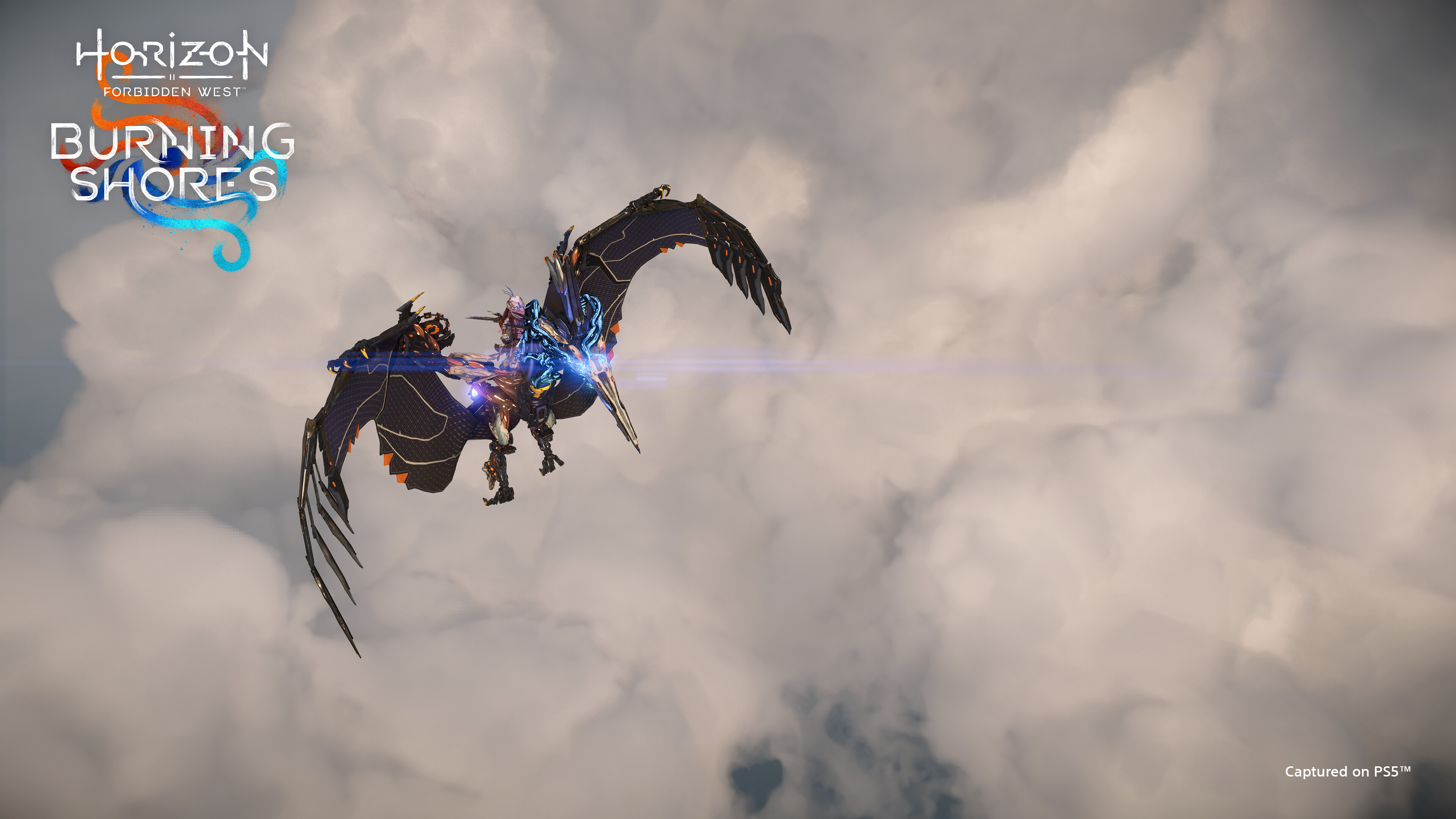
Achieving the balance between performance and quality when the player can be on the ground, and high up in the air was an ambitious challenge. Yet the prototype paid off, generating dense, dynamic results at low and high altitudes, a feat made possible by hard work, as well as the increased power of the PlayStation 5.
But creating a single cloud was a long way from building an entire cloudscape.
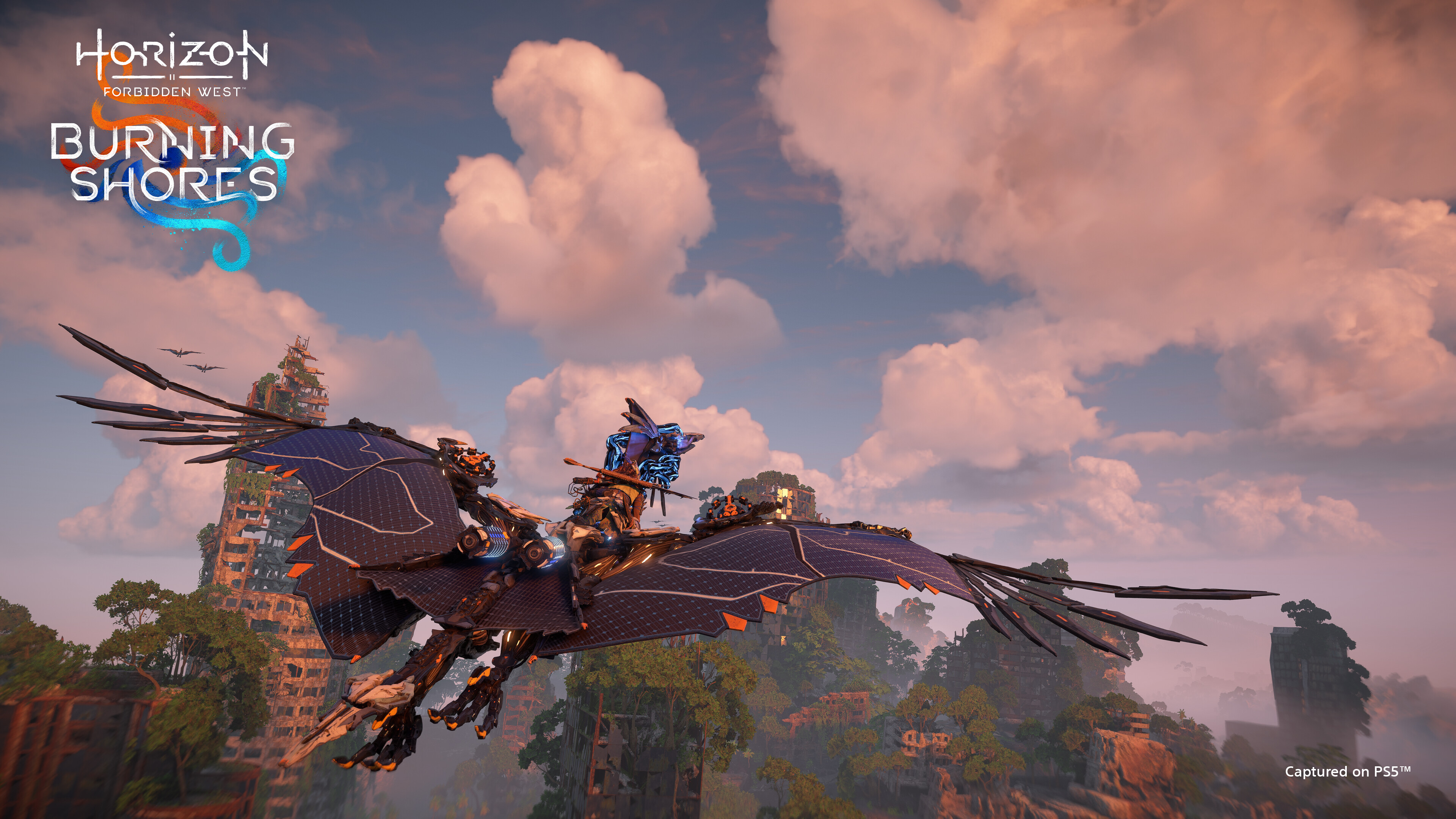
Andrew had created what he called “Frankencloudscapes” — large cloud formations so that the sky could be treated like as a landscape would by a terrain modeler. As a result, the cloudscape acted as both a background element and an environment to explore.
To make this work at the scale needed for Burning Shores, a strike team at Guerrilla tackled the challenge of flying through clouds – the real test of performance and quality. Andrew teamed up with Nathan and brought in Hugh Malan, a Senior Principal Tech Programmer.
The first hurdle they encountered was deeply technical: how do you handle a huge quantity of volumetric voxel data?
“Hugh and I divided this issue to conquer it. I developed a way to take low-detail voxel data and add detail during rendering. Meanwhile, Hugh worked on compressing the data so it could be accessed faster from memory. Together, these processes made rendering Volumetric Voxel Clouds exponentially faster.”
“But it still wasn’t fast enough,” Andrew recalls. “The costliest part of this process was calculating cloud lighting, which, in itself, is complicated. To get around this, Nathan engineered a method to reduce rendering time to a speed that would work for both standard and high frame rate modes.”
“This was also one of those rare situations where an optimization produced a better visual result. It allowed us to cast cloud-to-cloud shadows over a much larger distance, improving realism. At this point, we had a method to render volumetric clouds from the ground and in the air, right up next to them.”
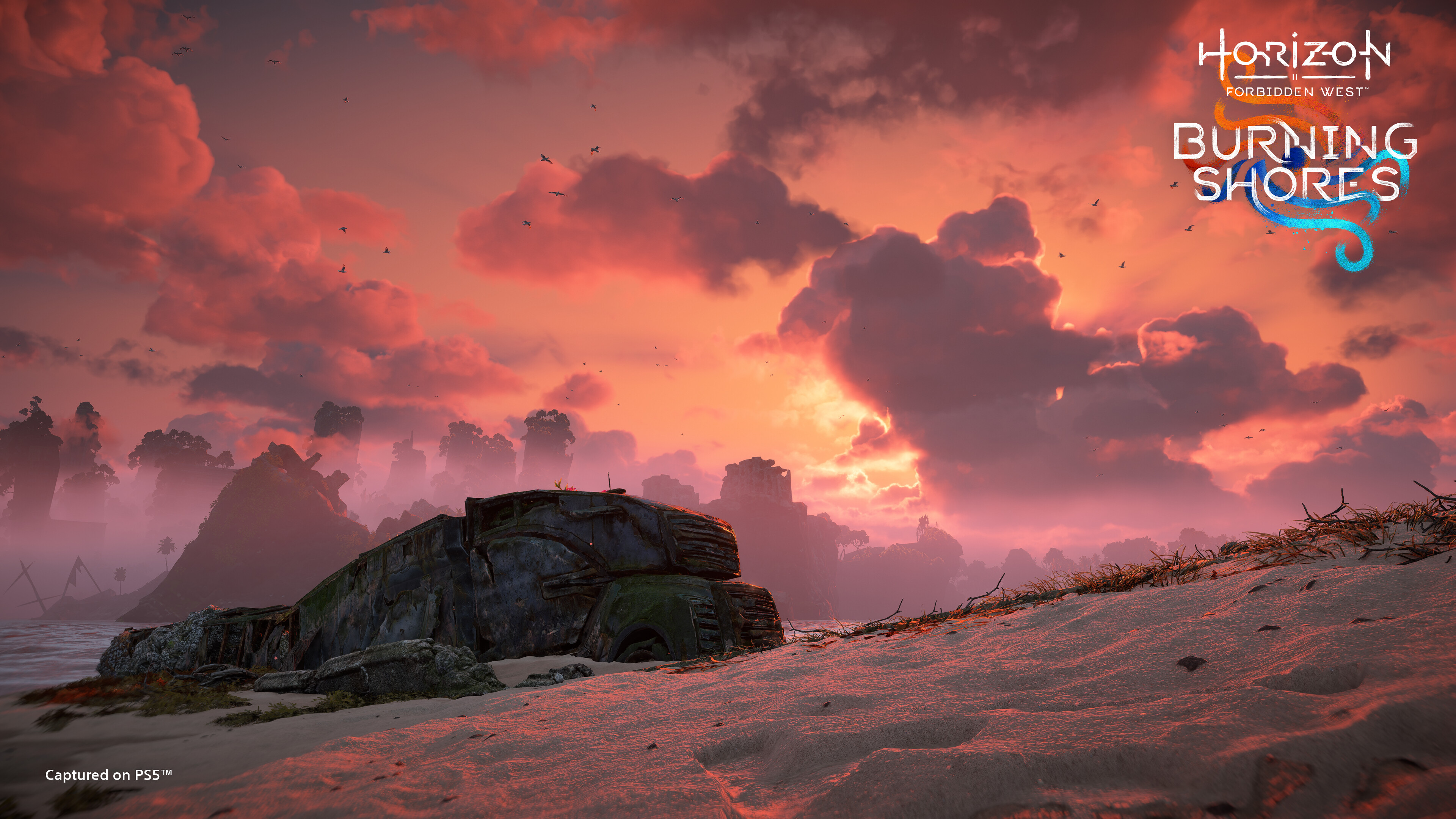
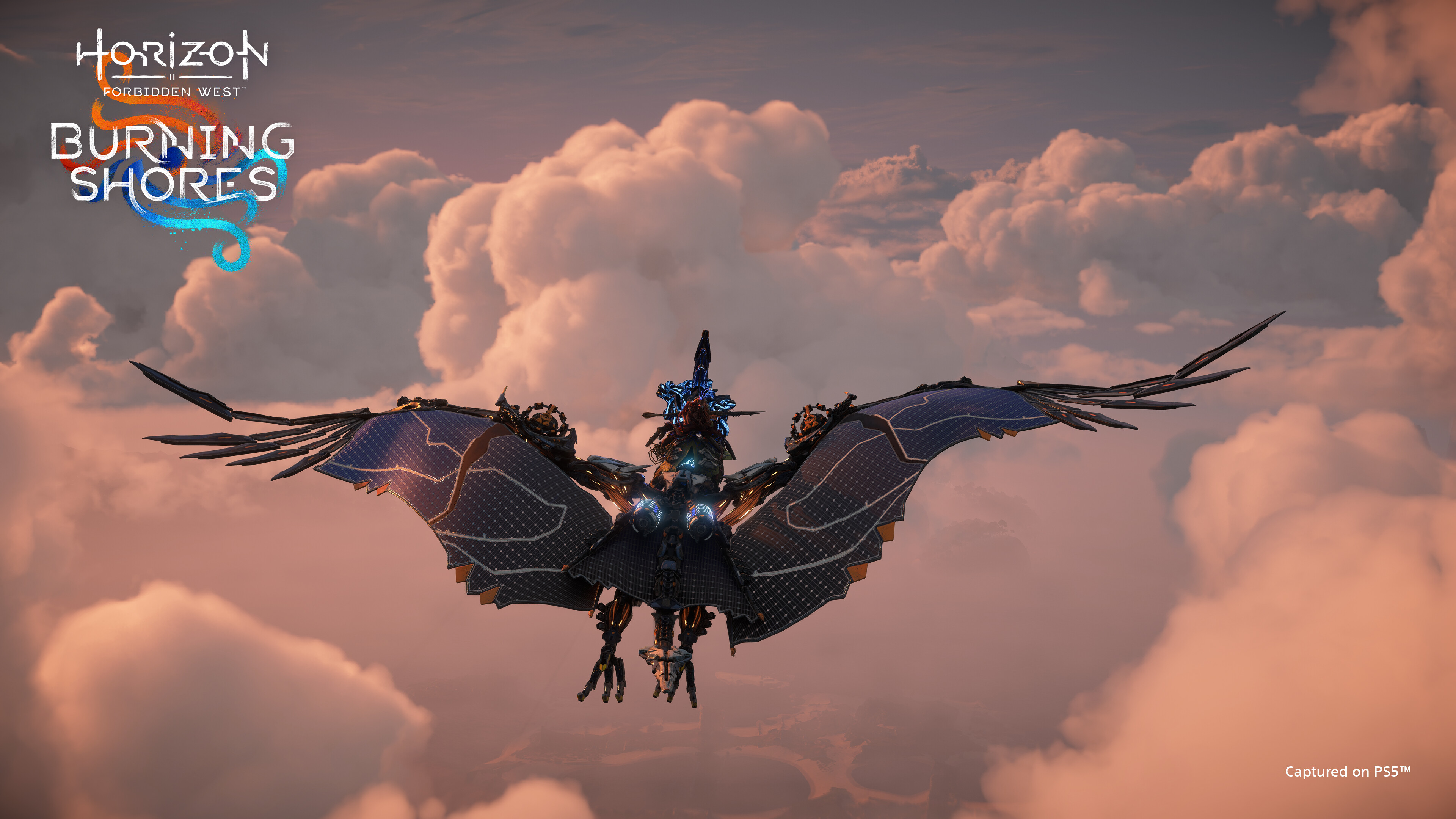
The second challenge was balancing. “There is a dance that real-time graphics engineers do to balance quality and performance,” Andrew continues. “Quality usually comes at a ‘cost’ in terms of processing. So, every time we improve the quality of our clouds, we need to do so in a way that costs either as much as, or less than, the current cost of the cloud system.”
To find this balance, Senior Principal Tech Programmer and graphics engineer James McLaren helped the team understand how the code behaved at a low level on the PlayStation hardware itself. His expertise allowed them to take full advantage of the hardware by optimizing code for the PlayStation 5. “James’ contributions were fundamental in the early stages of development, allowing Guerrilla to push the boundaries during production,” recalls Andrew.
In the end, the pieces add up to give the player the awe-inspiring feeling of soaring through and around a cloudscape as accurate and varied as the land below. All on the back of their Sunwing.
What awaits in Burning Shores
When heading to the Burning Shores, Aloy will run into familiar machines and faces. But she will also discover new ways to explore her world.
“It was important to us to make the experience fun and joyful on its own outside of the main gameplay. The clouds are not simply immersive scenery but an explorable landscape in themselves. Among the clouds, players will be able to explore tunnels, caves, and other surprises that make for fun flying,” says Andrew.

“The best part is that depending on when you try any of these features, the experience will be different. As the day progresses, the quality and direction of light change, hiding and revealing some of these features and changing the feel of each journey.
And I don’t want to spoil anything – but we hope you aren’t afraid of a little lightning.”





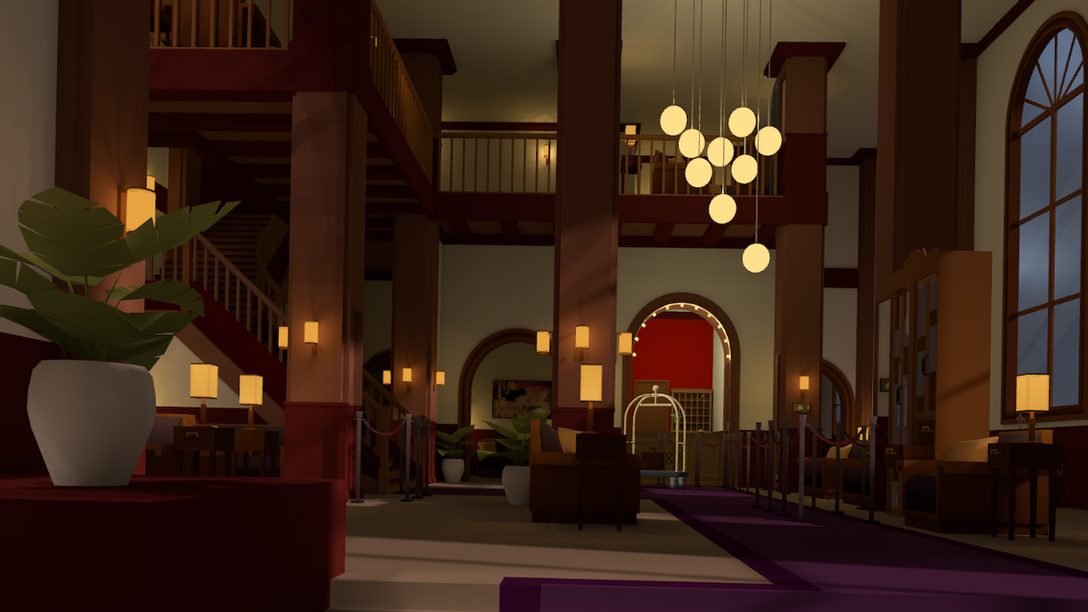





Comments are closed.
23 Comments
Loading More Comments